Zeckendorf Towers, 1 Irving Place: Review and Ratings
between East 14th Street & East 15th Street View Full Building Profile
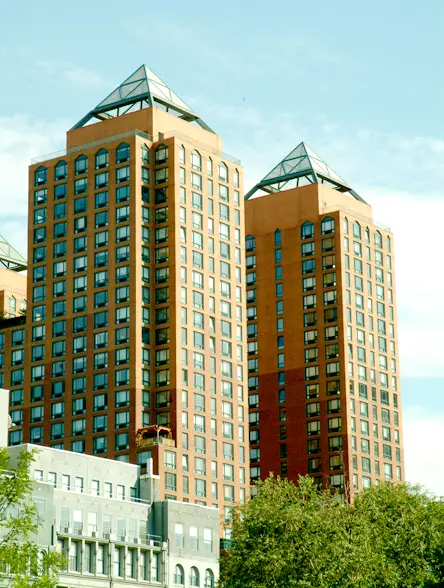

One of the city’s most important development projects of the 1980’s, the full-block Zeckendorf Towers complex at 1 Irving Place at 14th Street not only led to the renaissance of Union Square Park, but also anchored the phenomenal emergence of Park Avenue South and the Flatiron District as a chic neighborhood.
The four-towered condominium enclave, which was completed in 1987, replaced many run-down, low-rise buildings, several of which had comprised the S. Klein Department Store, one of the city’s famous discount stores for decades.
The development has 670 apartments and was designed by Davis, Brody & Associates.
As the city’s only four-towered building, Zeckendorf Towers has already earned its place in history, but its real importance is its demonstration of how one major project can turn a neighborhood around.
It may well prove to be the most important achievement of the developers: William Zeckendorf Jr., Abraham Hirschfeld, Irwin Ackerman and others.
To go forward with such a mammoth project in the heart of an unattractive, crime-ridden, heavily trafficked area in a no-man’s land between the established residential communities of Greenwich Village to the south and Gramercy Park to the north was a major act of courage.
Zeckendorf, it should also be noted, was one of the major partners in the WorldWide Plaza development on Eighth Avenue and 50th Street, another very pioneering project.
Bottom Line
Although New York University demolished the very famous Luchow’s restaurant, Palladium disco and Julian’s Billiard Academy on the south side of 14th Street, this giant, four-tower development turned Union Square from a drug haven to a green market and ushered in the renaissance of the Park Avenue South area. It’s also about a block away from a Whole Foods store to the west and a Trader Joe’s to the east.
Description
The 27-story towers are each capped with screens in the forms of pyramids that are illuminated at night providing a handsome complement to the famous illuminated clocktower of the larger, older Con Edison Building, which is directly across Irving Place.
The lit tops are a welcome addition to the skyline, especially when seen from the south with the lit towers of the Empire State and Chrysler buildings in the background. From the west, however, the towers partially obstruct views of the Con Ed tower, long the most visible landmark in the area.
The base of the Zeckendorf Towers building contains several hundred thousand square feet of office and retail space. The entrance to the former is through a multi-story atrium fronting on the park that had been famous in the 1930’s for demonstrations - although it later became a drug haven in the 1970’s and early 1980’s.
Zeckendorf Towers affords residents few apartments per floor and many excellent vistas, all highly desirable features. Of course, there are penalties for building four towers instead of just one or two: they are not as economic to build and elevators are a big factor, here there are 134 apartments per elevator, a high ratio.
The towers are clad in a warm red brick and the window frames are arranged to give vertical accents, while the fifth and top floors of the office portion of the base have arched windows, a design motif perhaps meant to echo the lovely new subway entrances in the park. The motif, however, does not relate to the rest of the building, but it is not too jarring, although it looks a bit suburban.
The city has since renovated the park and its vast subway concourses so that it is now quite attractive except for the trucks of the very popular weekend farmers’ market that occupies most of the street area at its north end. For most residents of the area, including nearby Gramercy Park, of course, the farmers’ market is a significant and welcome addition to the neighborhood with its variety of fresh produce.
Davis Brody have designed some of the most daring and bold residential towers in the city such as Waterside Plaza and Central Park Place, but here the magnitude of the venture probably dictated conservatism. The result is that the project is awkward and a bit ungainly in appearance. The towers are, in fact, very well proportioned, but sited on the city’s grid and set back from the angled Fourth Avenue/Union Square West/Park Avenue South street on which the building faces.
In 2010, the building opened the city’s largest residential green roof, one that could prevent over a quarter million gallons of storm water from entering the sewage system each year. More than 40 percent of the apartments have direct views of the green roof.
Amenities
The project offers a concierge, health club, pool and sundeck as well as a garage.
The building has a driveway and sidewalk landscaping on 15th Street.
Apartments
Apartment U9A is a one-bedroom unit with a 12-foot-long foyer, an enclosed kitchen and a 20-foot-long living room that opens onto a large and angled 32-foot-long terrace.
Apartment U8L is a one-bedroom unit with a foyer that leads down a very long hall to a small dining area opposite an open, pass-through kitchen and a 20-foot-long living room.
Apartment U7A is a two-bedroom unit with a 22-foot-long angled living room next to a 10-foot-wide dining room and an open kitchen.
Apartment G2DE is a three–bedroom unit that has a 9-foot-long foyer that opens on to a 26-foot-long living room with an 10-foot-long alcove across from a pass-through kitchen.
History
Directly across 14th Street, Luchow’s, the city’s most famous German restaurant, closed its doors several years ago and was replaced by a lackluster new residential building. Just a bit down 14th Street from Luchow’s was the Academy of Music, one of the city’s largest theaters that became the Palladium discotheque in the 1980’s and used to show two feature films, previews, newsreels and a vaudeville show for about $1 in the 1950’s. The Palladium’s interior was designed by the great Japanese architect, Arata Isozaki, and was spectacular, but New York University demolished the building and constructed a dormitory.
Architecturally, one might quibble that limestone towers might have better suited the project and that the design could have been more modern, or even Post-Modern. Such fantasies, however, overlook the great urban achievement here and the pyramid roof-tops are just fine.
In their fine book, "New York 2000, Architecture and Urbanism Between The Bicentennial and The Millennium," Robert A. M. Stern, David Fishman and Jacob Tilove noted that by the mid-1970s, Union Square Park “had lost its physical charm, degenerating into a 3.6-acre near wasteland that was a dangerous public place redolent with the scent of marijuana.” The authors asserted that “when in 1936 the park was elevated about five feet to permit construction of a subway mezzanine below, a change that tended to discourage public access, Union Square became a haven for the idle and, after the 1950s, for drug dealers.”
“Beginning in 1982,” the authors continued, “under the leadership of the architect Bronson Binger and the landscape architect Hui Meui Grove, both on the city’s staff, the Parks Department rebuilt Union Square Park, capturing some acreage formerly given over to parking, incorporating a newsstand on Union Square East opposite Fifteenth Street designed by Kuo Ming Tsu, new glass-covered subway entrance kiosks designed by Robert Klein of the Parks Department, and suitably ornate multi-globed light standards.”
“In March, 1976, approximately six months after the closing of S. Klein-on-the-Square, the discount department store that had since 1921 occupied a collection of nineteenth-century buildings on Union Square East (Park Avenue South) between Fourteenth and Fifteenth Streets,” the authors wrote, “Julio Tanjeloff, an argentine lawyer active in retailing, announced plans for the store’s reopening as a full department store taking advantage of the untapped trading power of the prosperous nearby neighborhood. Tangeloff, who proposed to renovate the 300,0000-square-foot store comprised of eleven buildings, commissioned Andrew J. Blackman Associates in association with Stephen Lepp & Associates. The group had to reclad the exterior, some of which was built of cast iron, using glass fiber-reinforced concrete, a stucco-like surfacing, punctuated by vertical strips of polish stainless steel. Tanjeloff’s plan failed to materialize, dashing the community’s hopes of what many saw as an easy fix for Union Square’s problems.”
“In June 1980,” the authors added, “the Klein estate was reportedly in negotiations with five developers seeking the purchase the site and its buildings. But it was not until 1983, when William Zeckendorf Jr., son of the legendary developer of the 1950s and 1960s who had died in 1976, acquired a two-year option on the site, that progress began to be made. Zeckendorf retained Davis, Brody & Associates to develop plans for the block’s redevelopment as a cluster of four superscaled apartment towers set atop a seven-story base. The design, "vaguely imitating the Italian architect Aldo Rossi’s interpretative drawings of some of New York’s skyscraper icons, did not capture much support with the public or the architectural press."
"At the same time," the authors continued, "city history buffs and preservationists began to draw the public’s attention to the S. Klein site’s rich architecture, which included the former Union Square Hotel (1872), designed by James Renwick Jr., architect of St. Patrick’s Cathedral. To realize the Zeckendorf plan, the site needed to be rezoned, a move that was rigorously opposed by the Union Square Coalition, a group largely made up of newer residents who had moved into lofts and apartments and feared the impact of real estate speculation on their rented homes...”
“Though banal in their detailed design, the scheme of slender, salmon-colored brick-clad towers, each topped by an open-work pyramidal crown - dismissed by the editors of the AIA Guide as "illuminated levitating...yarmulkas" - minimized shadows on the square and blockage of views from it to the tower of the Consolidated Gas Company Building (Warren & Wetmore, 1926), which they were intended to complement...In its bland uniformity and lock-step regularity, Zeckendorf Towers was hardly inspiring, but it did help the reemerging district turn the economic corner."

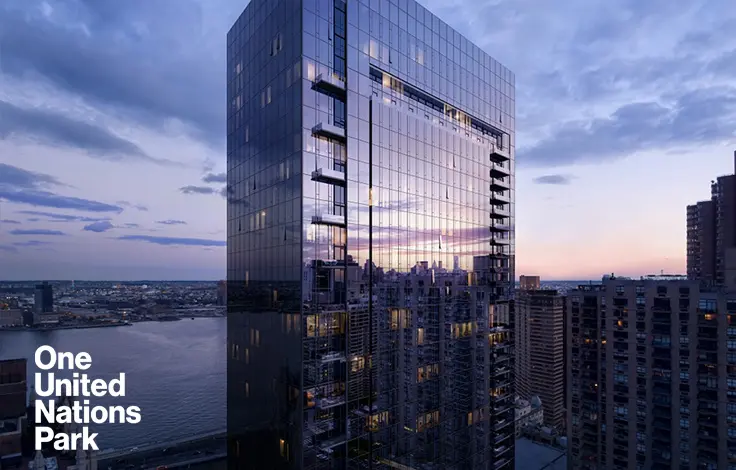
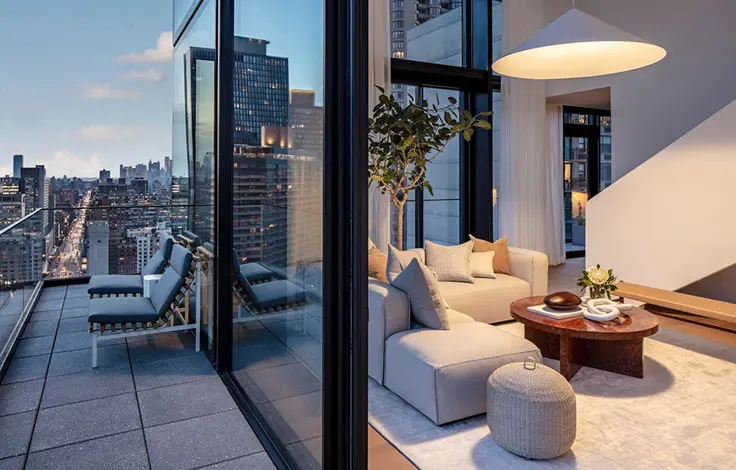
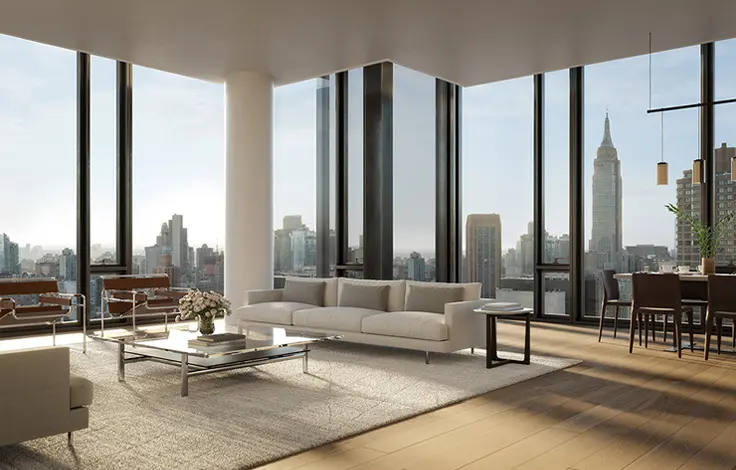
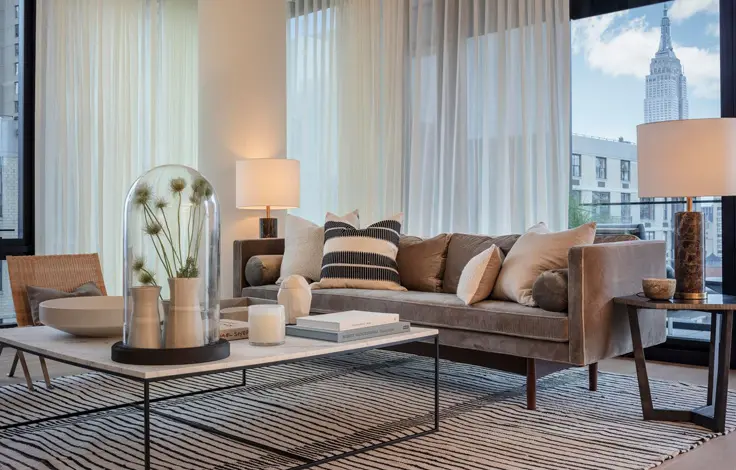
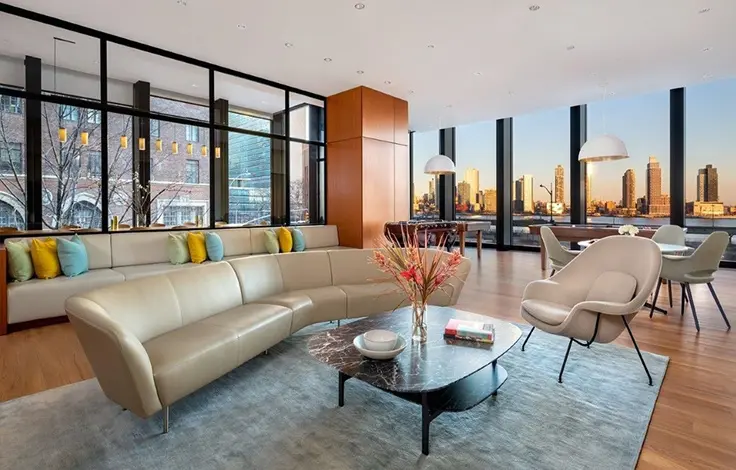
 6sqft delivers the latest on real estate, architecture, and design, straight from New York City.
6sqft delivers the latest on real estate, architecture, and design, straight from New York City.
